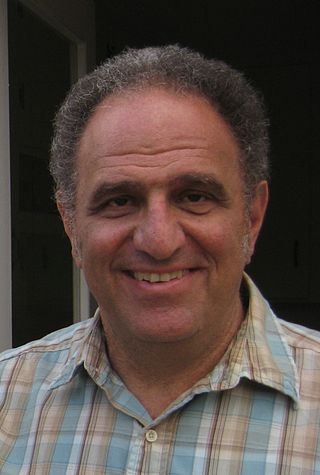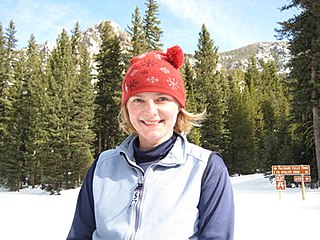In statistics, exploratory data analysis (EDA) is an approach of analyzing data sets to summarize their main characteristics, often using statistical graphics and other data visualization methods. A statistical model can be used or not, but primarily EDA is for seeing what the data can tell us beyond the formal modeling and thereby contrasts traditional hypothesis testing. Exploratory data analysis has been promoted by John Tukey since 1970 to encourage statisticians to explore the data, and possibly formulate hypotheses that could lead to new data collection and experiments. EDA is different from initial data analysis (IDA), which focuses more narrowly on checking assumptions required for model fitting and hypothesis testing, and handling missing values and making transformations of variables as needed. EDA encompasses IDA.

In statistics, probability density estimation or simply density estimation is the construction of an estimate, based on observed data, of an unobservable underlying probability density function. The unobservable density function is thought of as the density according to which a large population is distributed; the data are usually thought of as a random sample from that population.

Calyampudi Radhakrishna Rao was an Indian-American mathematician and statistician. He was professor emeritus at Pennsylvania State University and Research Professor at the University at Buffalo. Rao was honoured by numerous colloquia, honorary degrees, and festschrifts and was awarded the US National Medal of Science in 2002. The American Statistical Association has described him as "a living legend whose work has influenced not just statistics, but has had far reaching implications for fields as varied as economics, genetics, anthropology, geology, national planning, demography, biometry, and medicine." The Times of India listed Rao as one of the top 10 Indian scientists of all time.

Chernoff faces, invented by applied mathematician, statistician and physicist Herman Chernoff in 1973, display multivariate data in the shape of a human face. The individual parts, such as eyes, ears, mouth and nose represent values of the variables by their shape, size, placement and orientation. The idea behind using faces is that humans easily recognize faces and notice small changes without difficulty. Chernoff faces handle each variable differently. Because the features of the faces vary in perceived importance, the way in which variables are mapped to the features should be carefully chosen.
The Unistat computer program is a statistical data analysis tool featuring two modes of operation: The stand-alone user interface is a complete workbench for data input, analysis and visualization while the Microsoft Excel add-in mode extends the features of the mainstream spreadsheet application with powerful analytical capabilities.

Lawrence David (Larry) Brown was Miers Busch Professor and Professor of Statistics at the Wharton School of the University of Pennsylvania in Philadelphia, Pennsylvania. He is known for his groundbreaking work in a broad range of fields including decision theory, recurrence and partial differential equations, nonparametric function estimation, minimax and adaptation theory, and the analysis of census data and call-center data.
GGobi is a free statistical software tool for interactive data visualization. GGobi allows extensive exploration of the data with Interactive dynamic graphics. It is also a tool for looking at multivariate data. R can be used in sync with GGobi. The GGobi software can be embedded as a library in other programs and program packages using an application programming interface (API) or as an add-on to existing languages and scripting environments, e.g., with the R command line or from a Perl or Python scripts. GGobi prides itself on its ability to link multiple graphs together.

Michael Louis Friendly is an American-Canadian psychologist, Professor of Psychology at York University in Ontario, Canada, and director of its Statistical Consulting Service, especially known for his contributions to graphical methods for categorical and multivariate data, and on the history of data and information visualisation.
In statistics, an additive model (AM) is a nonparametric regression method. It was suggested by Jerome H. Friedman and Werner Stuetzle (1981) and is an essential part of the ACE algorithm. The AM uses a one-dimensional smoother to build a restricted class of nonparametric regression models. Because of this, it is less affected by the curse of dimensionality than e.g. a p-dimensional smoother. Furthermore, the AM is more flexible than a standard linear model, while being more interpretable than a general regression surface at the cost of approximation errors. Problems with AM, like many other machine learning methods, include model selection, overfitting, and multicollinearity.

Peter J. Rousseeuw is a statistician known for his work on robust statistics and cluster analysis. He obtained his PhD in 1981 at the Vrije Universiteit Brussel, following research carried out at the ETH in Zurich, which led to a book on influence functions. Later he was professor at the Delft University of Technology, The Netherlands, at the University of Fribourg, Switzerland, and at the University of Antwerp, Belgium. Next he was a senior researcher at Renaissance Technologies. He then returned to Belgium as professor at KU Leuven, until becoming emeritus in 2022. His former PhD students include Annick Leroy, Hendrik Lopuhaä, Geert Molenberghs, Christophe Croux, Mia Hubert, Stefan Van Aelst, Tim Verdonck and Jakob Raymaekers.

Robert Tibshirani is a professor in the Departments of Statistics and Biomedical Data Science at Stanford University. He was a professor at the University of Toronto from 1985 to 1998. In his work, he develops statistical tools for the analysis of complex datasets, most recently in genomics and proteomics.

Trevor John Hastie is an American statistician and computer scientist. He is currently serving as the John A. Overdeck Professor of Mathematical Sciences and Professor of Statistics at Stanford University. Hastie is known for his contributions to applied statistics, especially in the field of machine learning, data mining, and bioinformatics. He has authored several popular books in statistical learning, including The Elements of Statistical Learning: Data Mining, Inference, and Prediction. Hastie has been listed as an ISI Highly Cited Author in Mathematics by the ISI Web of Knowledge.
James Ralph Beniger was an American historian and sociologist and Professor of Communications and Sociology at the Annenberg School for Communication at the University of Southern California, particularly known for his early work on the history of quantitative graphics in statistics, and his later work on the technological and economic origins of the information society.
Heike Hofmann is a statistician and Professor in the Department of Statistics at Iowa State University.
Paul E. Green ) was a US marketing professor and statistician. He was S.S. Kresge Professor of Marketing, and later Professor Emeritus at the Wharton School, University of Pennsylvania.
Dianne Helen Cook is an Australian statistician, the editor of the Journal of Computational and Graphical Statistics, and an expert on the visualization of high-dimensional data. She is Professor of Business Analytics in the Department of Econometrics and Business Statistics at Monash University and professor emeritus of statistics at Iowa State University. The emeritus status was chosen so that she could continue to supervise graduate students at Iowa State after moving to Australia.
Hui Zou is currently a professor of statistics at the University of Minnesota.

Daniela M. Witten is an American biostatistician. She is a professor and the Dorothy Gilford Endowed Chair of Mathematical Statistics at the University of Washington. Her research investigates the use of machine learning to understand high-dimensional data.
Adele Cutler is a statistician known as one of the developers of archetypal analysis and of the random forest technique for ensemble learning. She is a professor of mathematics and statistics at Utah State University.

Kathryn Mary (Kathi) Irvine is an American research statistician for the United States Geological Survey (USGS), affiliated with the Bozeman Environmental and Ecological Statistics Research Group, at the USGS Northern Rocky Mountain Science Center in Bozeman, Montana. Her research involves environmental statistics including both the fundamentals of spatial statistics and its application to wildlife populations including bats, pikas, elk, pine trees, and sagebrush steppes.








